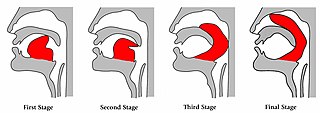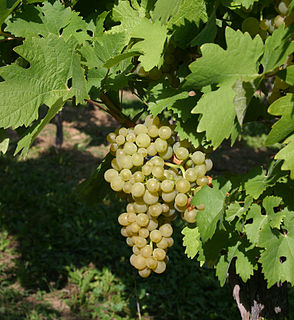
José Daniel Ortega Saavedra is a Nicaraguan politician serving as President of Nicaragua since 2007; previously he was leader of Nicaragua from 1979 to 1990, first as Coordinator of the Junta of National Reconstruction (1979–1985) and then as President (1985–1990). A leader in the Sandinista National Liberation Front, he implemented policies to achieve leftist reforms across Nicaragua. In later years, Ortega's previously far left politics moderated more and more, pursuing pro-business policies and even rapprochement with the Catholic Church, with the adoption of strong anti-abortion policies by his government in the 2000s, and adoption of strong religious rhetoric by the previously atheist Ortega.

José Ortega y Gasset was a Spanish philosopher and essayist. He worked during the first half of the 20th century, while Spain oscillated between monarchy, republicanism, and dictatorship. His philosophy has been characterized as a "philosophy of life" that "comprised a long-hidden beginning in a pragmatist metaphysics inspired by William James, and with a general method from a realist phenomenology imitating Edmund Husserl, which served both his proto-existentialism and his realist historicism, which has been compared to both Wilhelm Dilthey and Benedetto Croce."

Abhinavagupta was a philosopher, mystic and aesthetician from Kashmir. He was also considered an influential musician, poet, dramatist, exegete, theologian, and logician – a polymathic personality who exercised strong influences on Indian culture.

Swami Lakshman Joo was a mystic and scholar of Kashmir Shaivism. He was known as Lal Sahib by followers.
Ānandavardhana was the author of Dhvanyāloka, or A Light on Suggestion (dhvani), a work articulating the philosophy of "aesthetic suggestion". The philosopher Abhinavagupta wrote an important commentary on it, the Locana, or The Eye.
Somananda was one of the teachers of Kashmir Shaivism, in the lineage of Trayambaka, author of the first philosophical treatise of this school, Śivadṛṣṭi. A contemporary of Bhaṭṭa Kallaṭa, the two formed the first wave of Kashmiri Shaivites to propose in a rigorous and logical way the concepts of nondual Shaivism. Somananda lived in Kashmir, most probably in Srinagar, where most of the later philosophers of the school lived, as a householder.

Kashmir Shaivism, or Trika Shaivism, is nondualist tradition of Shaiva-Shakta Tantra which originated sometime after 850 CE. Though this tradition was very influential in Kashmir and is thus often called Kashmir Shaivism, it was actually a pan-Indian movement termed "Trika" by its great exegete, Abhinavagupta, which also flourished in Orissa and Maharashtra. Defining features of the Trika tradition are its idealistic and monistic Pratyabhijna ("Recognition") philosophical system, propounded by Utpaladeva and Abhinavagupta, and the centrality of the three goddesses Parā, Parāparā, and Aparā.

Nath, also called Natha, are a Shaiva sub-tradition within Hinduism. A medieval movement, it combined ideas from Buddhism, Shaivism and Yoga traditions in India. The Naths have been a confederation of devotees who consider Shiva, as their first lord or guru, with varying lists of additional lords. Of these, the 9th or 10th century Matsyendranath and the ideas and organization mainly developed by Gorakhnath are particularly important. Gorakhnath is considered the originator of the Nath Panth.

Khecarī Mudrā is a hatha yoga practice carried out by curling the tip of the tongue back into the mouth until it reaches above the soft palate and into the nasal cavity. In the full practice, the tongue is made long enough to do this with many months of daily tongue stretching and by gradually severing the lingual frenulum with a sharp implement over a period of months.
Abhinavabharati is a commentary on ancient Indian author Bharata Muni's work of dramatic theory, the Natyasastra. It is the oldest commentary available on the treatise. The Abhinavabharati was written by Abhinavagupta, the great Kashmiri Saivite spiritual leader and a yogi.
Alexis G. J. S. Sanderson is an indologist and Fellow of All Souls College at the University of Oxford.

Kaula, also known as Kula, and, is a religious tradition in Shaktism and tantric Shaivism characterised by distinctive rituals and symbolism connected with the worship of Shakti. It is claimed to have flourished in India primarily in the first millennium AD. The details of the sects were unknown until the Christian missionaries distorted and used tantric texts to claim that the Hindu texts were immoral.
Aham, a concept of Kashmir Shaivism, is defined as the supreme heart (hṛdayam), transcendent Self, supreme I awareness or infinite consciousness. The space of Aham is where khecarī mudrā is realised. Khecarī mudrā is considered the supreme state of spiritual evolution.
Prakāśa is a concept of Kashmir Shaivism translated by various authors as "light", "splendour", "light of consciousness", "luminous and undifferentiated consciousness" or "primordial light beyond all manifestations". Fellow Tantric practitioners Tibetan Buddhists practice Clear Light yoga based on a similar concept.

Ortega is a grape variety used for white wine. It was created in 1948 by Hans Breider at the Bayerischen Landesanstalt für Wein-, Obst- und Gartenbau in Würzburg and was released with varietal protection in 1981. It is a cross between Müller-Thurgau and Siegerrebe. Breider chose to name the variety in honour of the Spanish poet and philosopher José Ortega y Gasset.

The Vijñāna-bhairava-tantra is a Shaiva Tantra, of the Kaula Trika tradition of Kashmir Shaivism. It is also called the Śiva-jñāna-upaniṣad by Abhinavagupta.
Jaideva Singh was an Indian musicologist and philosopher. He played a key role in the development of All India Radio where he was chief producer. He was influenced by the Indian musicologist Vishnu Narayan Bhatkhande.
Dvādaśānta or the Brahmarandhra, meaning – having an end or limit of twelve, it is the twelve fingers’ breath, the 12th centre identified by some with the pituitary gland, there being six centers in the brain and six below the brain. This term refers to – a) externally to the place where the breath dies away, b) internally to the crown of the skull and known as brahmarandhra, and c) above the skull to the dvādaśānta which is twelve fingers breadth away from the brahmarandhra, and when no longer identified with the body but with the all-pervading Shiva it is the Cosmic dvādaśānta, a wheel with a thousand spokes, eternally present. Dvādaśānta is like the triśūla signifying three kinds of energy – of the will, of knowledge and of activity. The initial extremity (ādi-koti) is the heart but the final extremity (anta-koti) is the dvādaśānta.
In Hindu thought, Anubhava or anubhavah refers to personal knowledge or aesthetic experience.
Krishnananda Agamavagisha was a noted Kulin Bengali Brahmin of Nabadwip, Nadia district origin and a renowned Pandita (Scholar) and Sadhaka of Tantra tradition who lived around 1575 CE. He is the author of the "Tantrasara".










